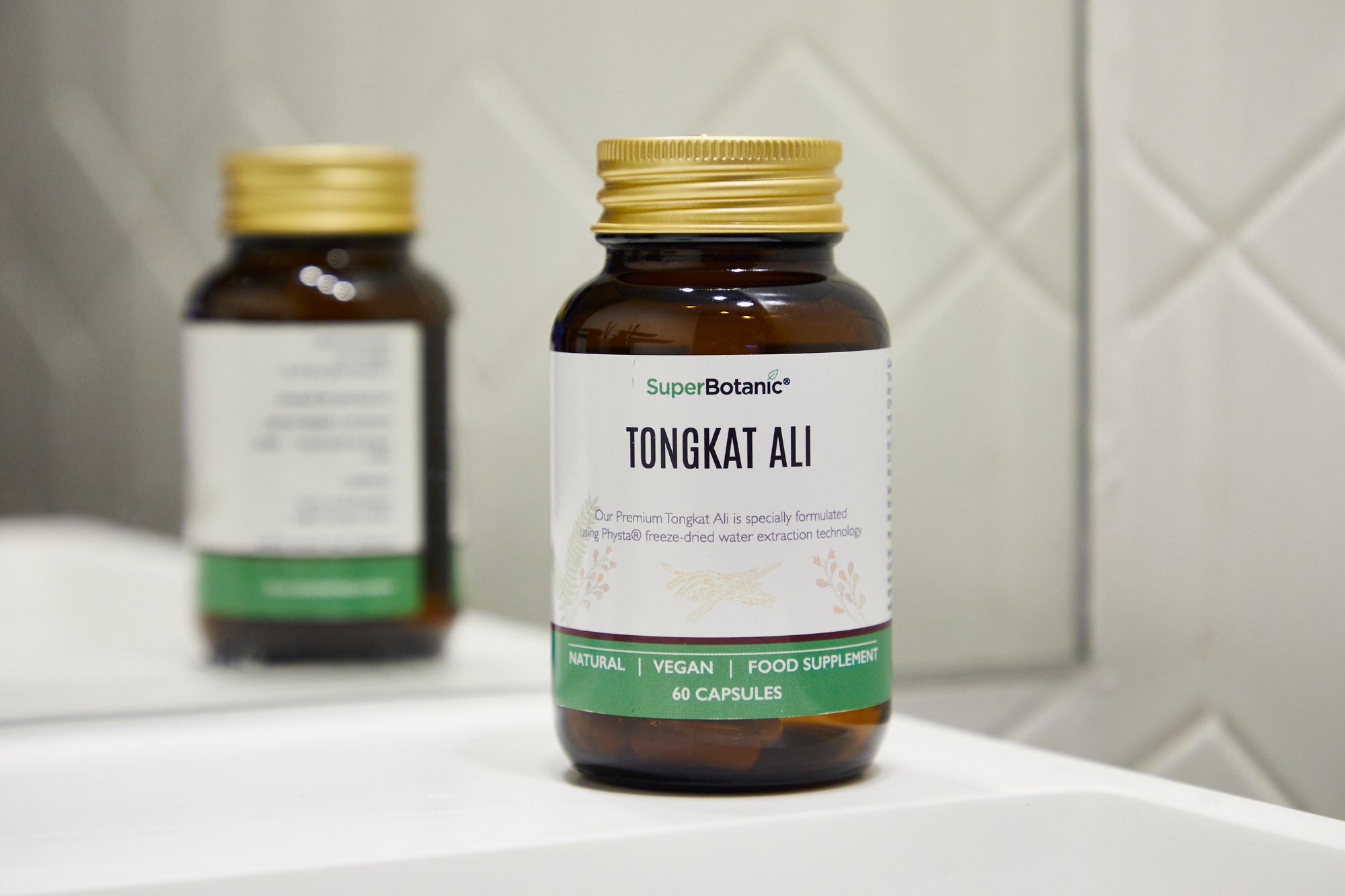Are you intrigued by Tongkat Ali but puzzled by terms like "standardization" and "Eurycomanone percentage"?
Do you wonder how Physta Extract stands out in a market filled with various Tongkat Ali products?
Your questions have been heard, and we're thrilled to introduce you to Dr. Annie George, a seasoned expert with years of dedicated research on Tongkat Ali. In this blog, we'll delve into a Q&A session where I've posed your top questions to Dr. George, allowing her to share her wisdom and insights on this fascinating topic;
What sets Physta Tongkat Ali apart from other extracts in the market?
PTA is a patented, standardised water extract from the root of Tongkat Ali on which several toxicology and 19 clinical studies have been conducted to demonstrate safety and efficacy. The extract in the market may be grounded root or stem or worst not Tongkat Ali at all and may be added with additional excipients. It could also be non-standardised.
As natural products can be inconsistent in their levels of bioactive compounds depending on location and time of harvest, the efficacy may not be consistent batch to batch giving inconsistent benefit.
Some also promise 200:1 or 100:1 etc. based on extract ratios. It gives the inference that it is concentrated i.e taking 200 kg of raw material to produce 1 kg of extract. This is not only impractical and wasteful but it does not represent the actual active components in the extract as we have tested and seen in the lab. By only using Eurycomanone as an indicator since it is unique to Tongkat ali, we have found that these extracts have in fact lower content than the standardised extract of Physta. The physta is 100% pure Tongkat Ali root extract is standardised to 0.8-1.5% eurycomanone, >30% total polysaccharide,>40% glycosaponin and>22% total protein thus ensuring the quality and efficacy at every batch.

Could you elaborate on the standardization process and the specific compounds or biomarkers used to assess Tongkat Ali's quality?
The Root of Tongkat Ali is harvested, washed, dried and chipped and undergoes water extraction under controlled temperature and pressure. The water extract goes through filtration, concentration, sterilisation, spray dried and blended. The extract goes through a QC step to ensure that it meets standardised levels.
Many customers inquire about eurycomanone levels. Could you clarify why this alone doesn't reflect the product's quality and potency?
Eurycamanone is only one of the many compounds in the extract. Producing it alone in high quantities in the extract points to the probability that the extraction is done using organic solvent extraction or Eurycamanone is spiked into the extract. This process is far from how it is produced traditionally and alters the natural state of the extract. The safety of such an extract has not be evidenced in a clinical study as with Physta. In addition, in the initial patent on Physta which is the result of research between MIT, USA and Malaysian research institution, a peptide within the root extract demonstrated testosterone modulating effect. Therefore it is clear that the effect of the total extract which constitutes various groups of compounds gives the synergistic effect which is on only testosterone modulating but with added benefits of immunity and others.

Extract ratio is often a focal point for customers and other brands. Could you explain why, due to the freeze-dried water extraction process and standardization, this doesn't accurately gauge product quality?
The extract ratio suggest that 200kg of root material has been extract to produce 1 Kg of extract. This is highly unlikely do to the sheer quantity of root required to produce a small quantity of extract. Additionally when these extracts are tested in our laboratory for the active compounds and using eurycomanaone as a gauge, the levels were far below 0.8% which is the minimal level in the standardised extract. It also points to an inefficient extraction method that requires a huge amount of root to be harvested and extracted to obtain a small amount of extract.
Extract ratio is often a focal point for customers and other brands. Could you explain why, due to the freeze-dried water extraction process and standardization, this doesn't accurately gauge product quality?
The extract ratio suggests that 200kg of root material has been extracted to produce 1 Kg of extract. This is highly unlikely do to the sheer quantity of root required to produce a small quantity of extract. Additionally, when these extracts are tested in our laboratory for the active compounds and using eurycomanaone as a gauge, the levels were far below 0.8% which is the minimal level in the standardised extract. It also points to an inefficient extraction method that requires a huge amount of root to be harvested and extracted to obtain a small amount of extract.

Our product is particularly popular among men over 35, who have reported physical and mental benefits. What, in your opinion, accounts for this phenomenon?
Normal testosterone is between 350-1150 ng/dL. While the range is wide for what is considered normal levels the benefits are significantly different in terms of mental, physical, and sexual health whether it is at lower, mid or upper testosterone levels.
80% of men will experience some ageing males’ symptoms > 40 years of age whereby serum testosterone concentrations in men decline.
- Total Testosterone: 0.4% and 2.6% (p/annum)
- Free Testosterone: 0.87% and 1.7% (p/annum)
- Serum testosterone becomes 40–50% lower in men >60 years compared with younger men.
Testosterone further depletes with medication and environmental stress, thereby raises cortisol in the expense of testosterone.
Hence the testosterone modulating effect of Tongkat Ali is keenly felt and is beneficial for men above 35 years of age.

While Tongkat Ali is traditionally associated with male supplementation, women like myself, aged over 40, have also experienced its benefits. How would you describe its benefits for women?
Testosterone is needed in women as well albeit lower levels for mental clarity, motivation, physical strength, and it strengthens bone, muscles and ups libido. It is excellent for energy and fatigue recovery in sports. It also improves metabolism by increases the metabolism of carbohydrate and increases the uptake of glucose into the cells (including muscle cells) where it can be utilized for release of energy. Testosterone is important for physical, mental, and sexual well being. It is also the precursor to estrogen.

Many customers inquire about dosage and cycling of the product. We would greatly appreciate your expert opinion on this matter.
The effective dose is between 50-200 mg per day. Most of the clinical studies are on the 200 mg dosage per day. Tongkat Ali can be used continuously. In the beginning the effect may be felt stronger and when the health status in the body moves to a maintenance state the benefit may be felt lesser. To “feel” the benefit again, one may stop using the product for 2 weeks after continuous usage of a year to washout the presence in the body and get back onto supplementation.
And there you have it – our deep dive into the world of Tongkat Ali with the amazing Dr. Annie George! We've tackled your burning questions, demystifying terms like "standardization" and uncovering the uniqueness of Physta Tongkat Ali. Dr. George's wisdom has shed light on why this botanical standout is a game-changer.



